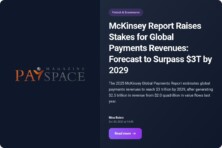South Korea’s current account has reached its biggest surplus in more than two years.

The mentioned result is largely due to global tendencies. South Korea specializes in the manufacturing of products that are necessary for the technology industry. In this case, it is keep in mind that the makers of the corresponding goods are based in an Asian country. Due to the specified circumstance, which is already what can be called a fundamental characteristic of South Korea as a manufacturing space, Seoul has turned out to be the beneficiary of such globally realized tendencies as the growth of worldwide demand for artificial intelligence and technological gear. Against the background of the mentioned consumer proclivity, the volume of chip exports from the Asian country increased. Smartphone shipments from South Korea have also rose
Balance of payments data showed that the Asian country recorded a net surplus of the current account at $8.9 billion in May. This figure is the highest since the summer of 2021.
The growth in South Korea’s foreign trade activity is associated with an increase in exports of semiconductors, wireless communication devices, machinery, and automobiles. The relevant information was released by the Bank of Korea on Friday, July 5. The financial regulator of the Asian country also reported that dividends from overseas investments returned to a positive balance.
Exports from South Korea in May were recorded at $58.95 billion. This indicator showed an increase of 11.1% year-on-year. Imports in May amounted to $50.2 billion. This indicator decreased by 1.9% compared to the same period of the last year.
The primary income account, which tracks the wages of foreign workers, dividend payments from overseas, and interest income, demonstrated a $1.76 billion surplus in May. It is worth noting that in April, a deficit of $ 3.33 billion was recorded.
The services account deficit in May was $1.29 billion, compared with $1.66 billion a month earlier.
Against the background of positive dynamic trade activity, the South Korean government expects the local economic system to show growth of 2.6% in the current year. It is worth noting that the previous forecast of the leadership of the Asian country provided for an increase in the mentioned indicator by 2.2%.
The sharp rise in prices for chips and other products made by South Korean manufacturers, in a sense, supports the confidence of the local financial regulator that the dynamic of the economic system can be on a trajectory of steady growth in the current conditions of monetary policy. This means that in the foreseeable future, the Bank of Korea has arguments in favor of not making any decisions about changing the interest rate indicator. Currently, in the Asian country, the benchmark cost of borrowing is 3.5%. During the May meeting, officials of the Bank of Korea decided for the 11th time in a row that there was no need for any changes to the mentioned indicator. The next meeting of the specified officials will take place in the forthcoming week. According to economists interviewed by the media, the financial regulator of the Asian country will not change the cost of borrowing.
At the same time, expectations of a change in the monetary policy of the Bank of Korea towards a more neutral stance are currently increasing and scaling up. This point of view is based on the fact that the inflation process in the Asian country is nowadays moving towards the target of the local financial regulator of 2%. Experts interviewed by the media admit the possibility that in August or autumn, the Bank of Korea will ease its monetary policy. At the same time, supporters of the mentioned point of view note that the obstacles to such a decision by the financial regulator of an Asian country may be the already mentioned strong economic growth and the fall of the won against the dollar. It is worth noting that the increase in export activity indicators did not become a factor of some kind of salvation for the national currency of South Korea. The won is currently among the worst-performing currencies in Asia, putting pressure on consumers and importers. The continued growth of the current account surplus is likely to support the national currency of South Korea to some extent.
As we have reported earlier, South Korea Q1 GDP Growth Exceeds Estimates.









